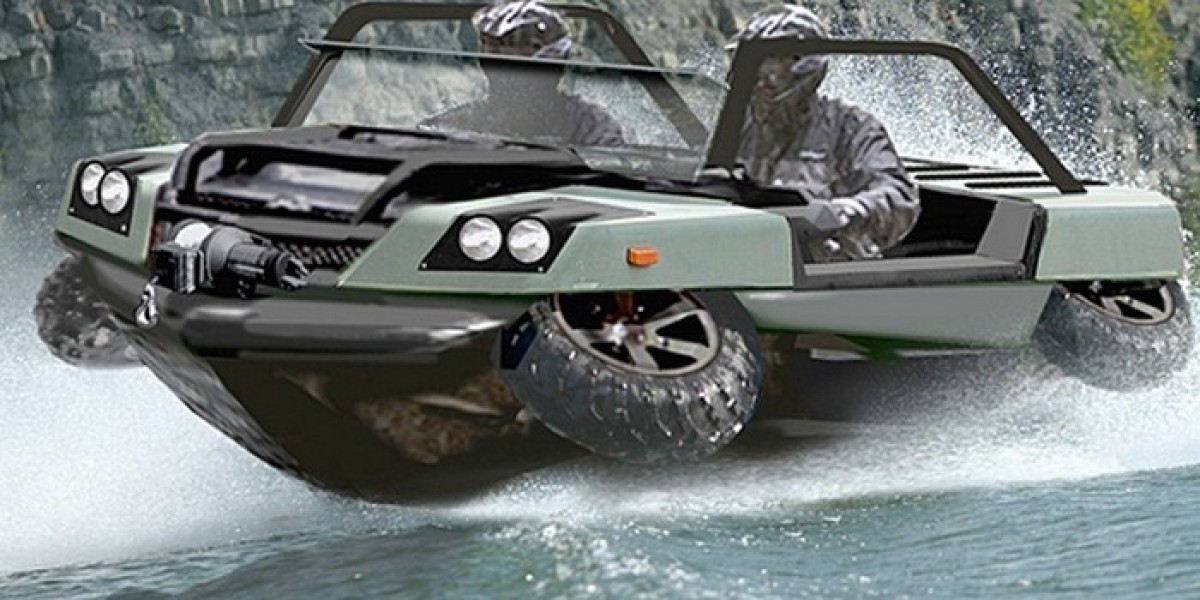Amphibious vehicles are automobiles or trucks that have been designed to operate both on land and water. They convert between ground and marine propulsion typically usinglarge wheels for land mobility and propellers or water jets for operation in water. Some key types include amphibious all-terrain vehicles (ATVs), military amphibious armored personnel carriers, and small survey or expedition crafts able to traverse shallow coastal waters or rivers.
Design Considerations for Floatation and Propulsion
For a vehicle to operate effectively on both land and water, special engineering solutions are required. The hull must provide adequate floatation to support the vehicle and any cargo load in water. Early Amphibious Vehicles simply had light frames to reduce weight and allow them to float, but modern designs incorporate air-tight compartments or solid foam blocks for flotation.
Propulsion methods also require special adaptation. On land, wheels or tracks provide motive power but need to be retractable for water travel. Marine propellers or water jets are typically installed at the rear for propulsion in water. Engines must be able to power both systems, and transmission components like driveshafts and differentials allow switching between them. Control surfaces like rudders are added for steering ability once in the water.
Growth in Military Applications
Amphibious vehicles first saw widespread use by military forces needing transport across coastal areas or water barriers on the battlefield. During World War 2, the United States produced over 20,000 "Ducks", small amphibious trucks able to land assault troops and supplies directly on beaches from landing craft. More recently, larger armored amphibious vehicles like the BvS 10 from Sweden have provided infantry with protected mobility in littoral zones.
Commercial Survey and Rescue Markets
As amphibious technologies advanced, applications expanded beyond strictly military use. Amphibious ATVs and specialized terrain vehicles now play important roles in various commercial activities. Coast guard, police, and emergency response teams employ them to quickly reach people in flooded areas or isolated coastal regions. Scientific survey teams also use small amphibious crafts for environmental monitoring tasks in shallow waters around wetlands, estuaries, mangroves and coral reefs that are not accessible by boat.
Modern Expedition and Recreation Models
Recreational users have also driving growing demand for specialty amphibious vehicles suitable for adventure travel. Companies manufacture expedition vehicles able to traverse lakes, rivers, mudflats and mild coastal surf zones. Models like the Combat Duck are purpose-built as rugged all-terrain guides for fishing, hunting,photography,and ecotourism activities in remote inland and coastal wetlands. Some amphibious RV concepts also envision this capability enabling new forms of waterfront "glamping" adventures.
New Applications on the Horizon
As technologies and designs rapidly evolve, new applications for amphibious vehicles are emerging. Mining and resource sector firms are exploring their potential for versatile transport across northern landscapes with extensive wetlands and shallow lakes near mine sites. Amphibious drones and robotics are in research and development to perform tasks like seafloor, estuary or riverbed mapping, pipeline inspection, and environmental monitoring in difficult to access intertidal zones. Concept vehicles also envision their use for disaster response, search and rescue, and mobile field medical units able to operate right at the flood zone frontier between land and sea.
From their early military origins carrying troops across Invasion beaches, amphibious vehicles have seen extensive design innovation and now support diverse commercial activities relying on capability to traverse both land and water terrains. Continuous improvements in materials, propulsion methods, and engineering solutions are opening up many new applications and uses in fields like scientific research, natural resource exploration, public safety and adventure recreation. As extreme weather and rising sea levelsassociated with climate change create more transitional zones between land and ocean, the versatility of amphibious platforms will become even more valuable across many industries and sectors worldwide.
Get More Insights on Amphibious Vehicles
Explore more with your preferred language-
About Author-
Priya Pandey is a dynamic and passionate editor with over three years of expertise in content editing and proofreading. Holding a bachelor's degree in biotechnology, Priya has a knack for making the content engaging. Her diverse portfolio includes editing documents across different industries, including food and beverages, information and technology, healthcare, chemical and materials, etc. Priya's meticulous attention to detail and commitment to excellence make her an invaluable asset in the world of content creation and refinement.
(LinkedIn- https://www.linkedin.com/in/priya-pandey-8417a8173/)










